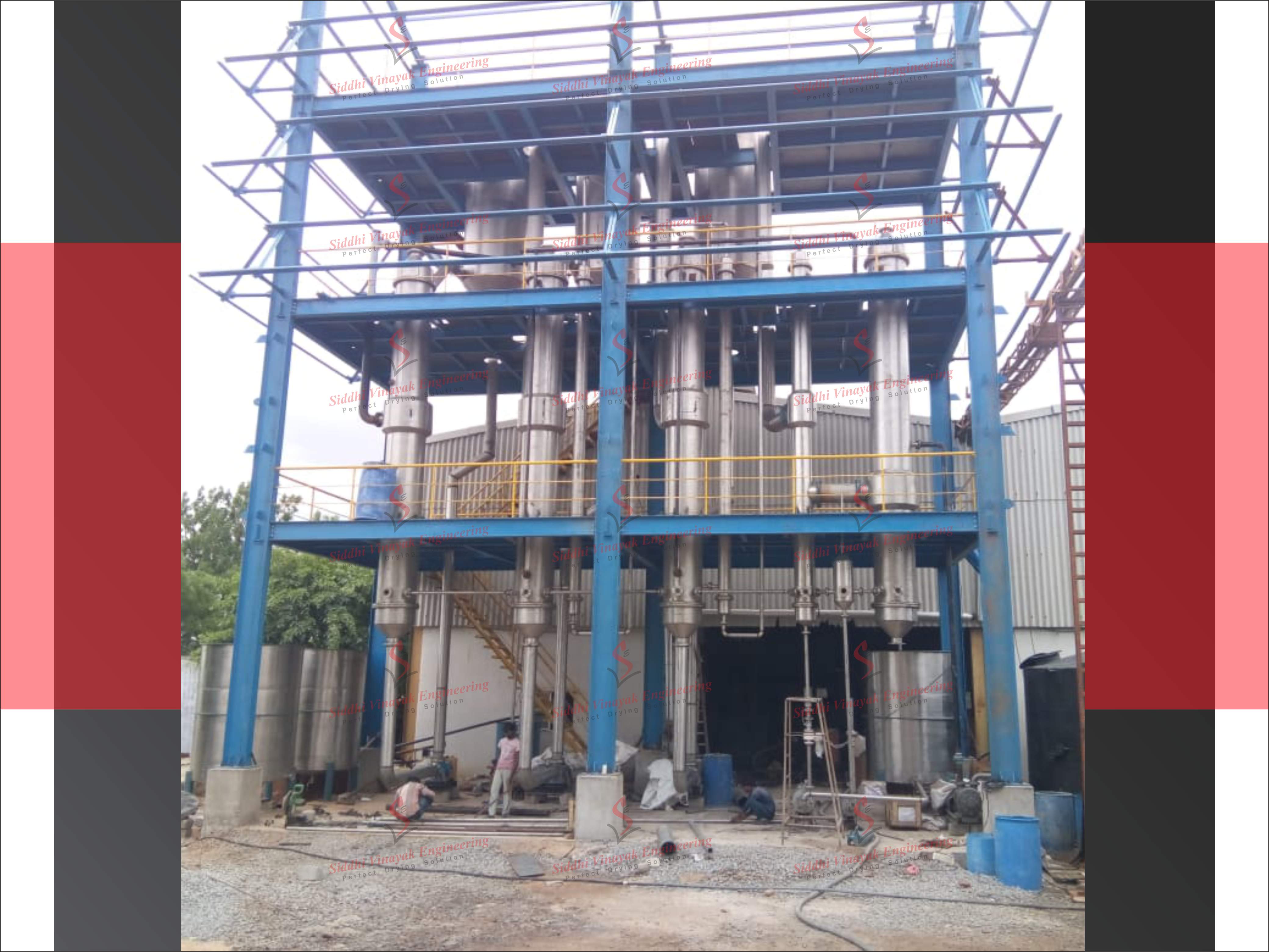
Multi Effect Evaporator
A multi-effect evaporator is a sophisticated thermal processing equipment used in industries for the concentration of solutions by sequentially utilizing multiple evaporator stages. This design allows for the reuse of energy, making the process more energy-efficient compared to single-effect evaporators.
Basic Principle:
- The multi-effect evaporator operates on the principle of heat exchange and sequential vaporization. The process typically consists of several evaporator effects (stages), each operating at a progressively lower pressure. The vapor generated in one effect is used to heat the feed in the next effect, thereby utilizing the latent heat of vaporization efficiently.
Components of Multi-Effect Evaporator:
- Evaporation Effects: The individual stages where vaporization occurs, typically arranged in a series.
- Condenser: Condenses the vapor from the last effect, transferring the latent heat to the feed of the first effect.
- Heat Exchangers: Transfer heat from the vapor to the liquid in each effect, promoting evaporation.
- Feed Pump: Moves the liquid through the evaporator system.
- Product and Vapor Separators: Separate the concentrated product from the vapor
Product Feature
Advantages of Multi-Effect Evaporator:
- Energy Efficiency: The primary advantage is the reuse of energy, as vapor from one effect is used to heat the feed of the next effect.
- Space Efficiency: Achieves high concentration ratios without the need for excessive equipment size.
- Reduced Operating Costs: Lower energy consumption leads to reduced operational costs.
- Environmental Impact: Improved energy efficiency contributes to a lower environmental impact.
Product Application
Industrial Applications:
- Food Industry: Used for the concentration of fruit juices, milk, and other food products.
- Chemical Industry: Applied in the production of various chemical products, including acids, salts, and organic compounds.
- Desalination: Utilized in multiple-effect distillation for desalination of seawater.
- Wastewater Treatment: Concentration of wastewater streams in industrial processes
Filter Using Product Tags

